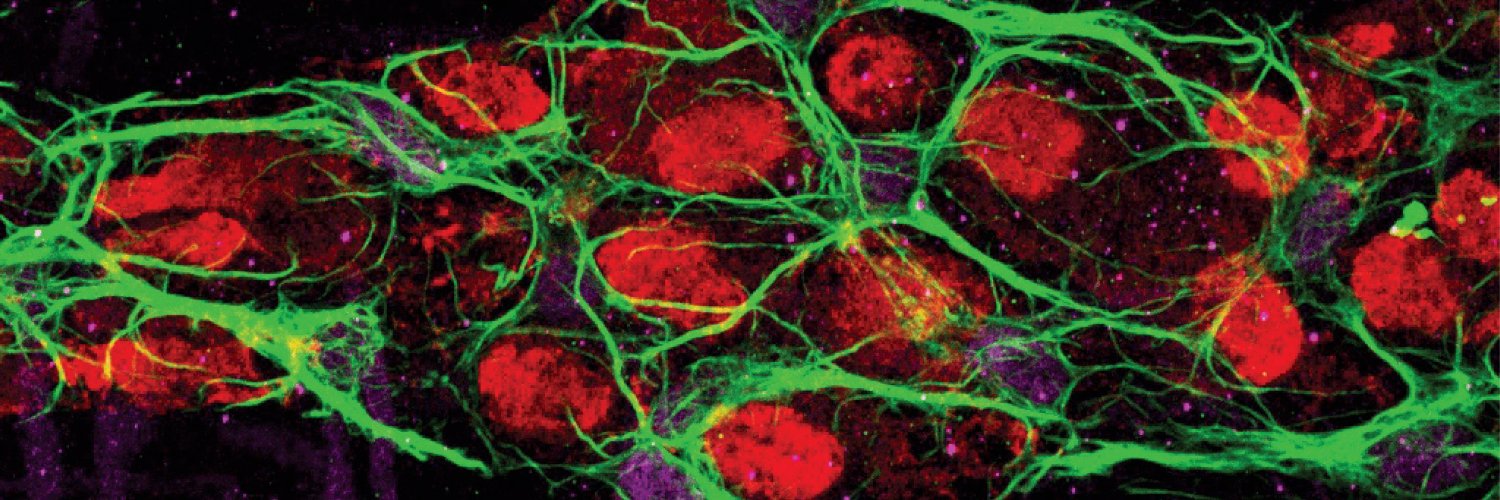
Christoph Thaiss
@ChristophThaiss
Exploring how the environment, brain & body interact to shape human health | Faculty @Stanford & Core Investigator @ArcInstitute
Our 2nd Annual Investigator Retreat wrapped up with talks covering immunology and technology development from Core Investigators @ChristophThaiss and @FelixHorns, our incoming Science Fellow @maya_arce_, and our Innovation Investigators and Ignite Awardees @icclarker, Calvin Kuo,…
How close are we to simulating living cells? Today @arcinstitute is launching the Virtual Cell Challenge (VCC), an annual competition for evaluating progress towards a virtual cell. Read our @CellPressNews commentary
Delighted to announce @arcinstitute's Virtual Cell Challenge - a recurring, open, community-driven challenge to benchmark cellular foundation models See our announcement in @CellCellPress below, with prizes up to $100,000, sponsored by @Nvidia @10xGenomics @UltimaGenomics!
Register today for the Virtual Cell Challenge and use AI to solve one of biology’s most complex problems. Announced in @CellCellPress, the competition is hosted by Arc Institute and sponsored by @nvidia, @10xGenomics, and @UltimaGenomics.
Getting to the virtual cell is the holy grail of life science. Now there's a challenge on to accelerate it cell.com/cell/fulltext/… @arcinstitute @CellCellPress @nvidia @10xGenomics @yusufroohani @StanfordAILab @davey_burke @UltimaGenomics
Register today for the Virtual Cell Challenge and use AI to solve one of biology’s most complex problems. Announced in @CellCellPress, the competition is hosted by Arc Institute and sponsored by @nvidia, @10xGenomics, and @UltimaGenomics.
Excited to announce Arc Institute's first virtual cell model: State. Reliably predicting cellular responses to drug and genetic interventions is arguably the next frontier in AI & biology. arcinstitute.org/manuscripts/St… arcinstitute.org/news/virtual-c…
Arc's first virtual cell model. Am very excited about where this program is going.
Today @arcinstitute releases State, our first perturbation prediction AI model and an important step towards our goal of a virtual cell State is designed to learn how to shift cells between states (e.g. “diseased” to “healthy”) using drugs, cytokines, or genetic perturbations
Cells are dynamic, messy and context dependent. Scaling models across diverse states needs flexibility to capture heterogeneity Introducing State, a transformer that predicts perturbation effects by training over sets of cells Team effort led by the unstoppable @abhinadduri
Today @arcinstitute releases State, our first perturbation prediction AI model and an important step towards our goal of a virtual cell State is designed to learn how to shift cells between states (e.g. “diseased” to “healthy”) using drugs, cytokines, or genetic perturbations
Microbial regulation of interoception @ChristophThaiss sciencedirect.com/science/articl…
“Every failure teaches us something.” Arc's Core Investigator @li_lingyin on the path to STING activation, cGAMP, and what it means for the future of cancer treatment.
Excited to share our study in @SciImmunology dissecting the immune landscape of psoriatic arthritis (PsA)—with a new finding: immunoproteasome overactivity drives treatment resistance🧵 Led by Reut Tzemach,Chamutal Gur,@TgSanPhan,Eyal David & team. (1/11) science.org/doi/10.1126/sc…
Wanted to highlight our latest preprint--a huge effort by multiple people and labs, but led primarily by Will DeWitt (UW) and Tatsuya Araki and Ashni Vora (our lab), in a very close wet-dry collaboration with @ematsen ’s lab at the Hutch biorxiv.org/content/10.110…
.@ArcInstitute is redefining how biomedical research is conducted. Looking to harness body-brain communication to counteract human disease, our lab is exploring new approaches through shared tools & collaboration. Read more in our Q&A. arcinstitute.org/news/news/chri…
From Nature Microbiology - Gut metagenomes reveal interactions between dietary restriction, ageing and the microbiome in genetically diverse mice buff.ly/2Os0MDu #bwfpath
Genomes encode biological complexity, which is determined by combinations of DNA mutations across millions of bases In new @arcinstitute work, we report the discovery and engineering of the first programmable DNA recombinases capable of megabase-scale human genome rearrangement
What if we could universally recombine, insert, delete, or invert any two pieces of DNA? In back-to-back @Nature papers, we report the discovery of bridge RNAs and 3 atomic structures of the first natural RNA-guided recombinase - a new mechanism for programmable genome design
We secure all communications with a cloud-hosted LLM, running on an H100 in confidential mode. Latency overhead goes away once you cross the 10B model size. This is our first foray into applied cryptography -- help us refine our ideas.
can you chat privately with a cloud llm—*without* sacrificing speed? excited to release minions secure chat: an open-source protocol for end-to-end encrypted llm chat with <1% latency overhead (even @ 30B+ params!). cloud providers can’t peek—messages decrypt only inside a…
Want to discover, design, and engineer cutting-edge drug delivery vectors? We're hiring a PhD-level Scientist at the Horns Lab at @arcinstitute and @Stanford! Check out bit.ly/ScientistDeliv…
Today, we're announcing new partnerships with @10xGenomics and @UltimaGenomics to accelerate development of the Arc Virtual Cell Atlas. (1/6)
🚨Gut Feelings: The critical role of #Interoception in #Obesity & #Disorders of #Gut-Brain Interaction #DGBIs‼️ 🎯#GutConnectome🔁#BrainConnectome🧠matters most in #Obesity & #DGBIs🔥 📢Metabolic & digestive disorders are linked to #GI #Interoception & involve aberrant gut-brain…